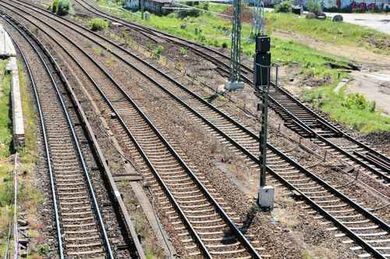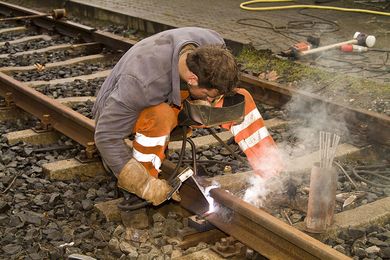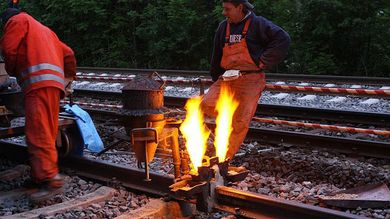SLV – Schweißtechnische Lehr- und Versuchsanstalten



Permanent ways
In the case of a railway line, the track bed with the assembled tracks, also called the rail track, is designated as the permanent way. The foundation, a solid base for the track structure, is located underneath this. The permanent way normally consists of the ballast track bed on which sleepers are placed and the rails which are fixed on the sleepers with fastenings. The ballast track bed is very good at absorbing the forces introduced by the vehicles and can distribute them on to the foundation.
The essential disadvantage of ballast track beds is that ballast stones may be thrown upwards at very high speeds and may thus damage the vehicle undercarriage. Therefore, high-speed lines are predominantly built as a fixed carriageway. In this respect, the rails are assembled directly on the concrete permanent way.
DB Netz AG operates approx. 87 % of the rail network in Germany which has a length of approx. 33,000 kilometres.



The rail lengths which are usually laid today are more than 100 metres. The joints are normally welded. The process frequently utilised here is aluminothermic welding. A higher weld quality is achieved with the considerably more complicated flash butt welding. Moreover, the manual electric arc and MIG/MAG processes are utilised for the welding of rail joints. These processes are also used for surface welding on rails.
GSI has employees who, as plant auditors according to DB Ril 826, are authorised to issue suitability certificates for permanent ways in order to carry out permanent way welding work on the track or in the factory.
Furthermore, GSI offers a wide spectrum of specialist theoretical and practical training for the field of permanent way welding technology.
